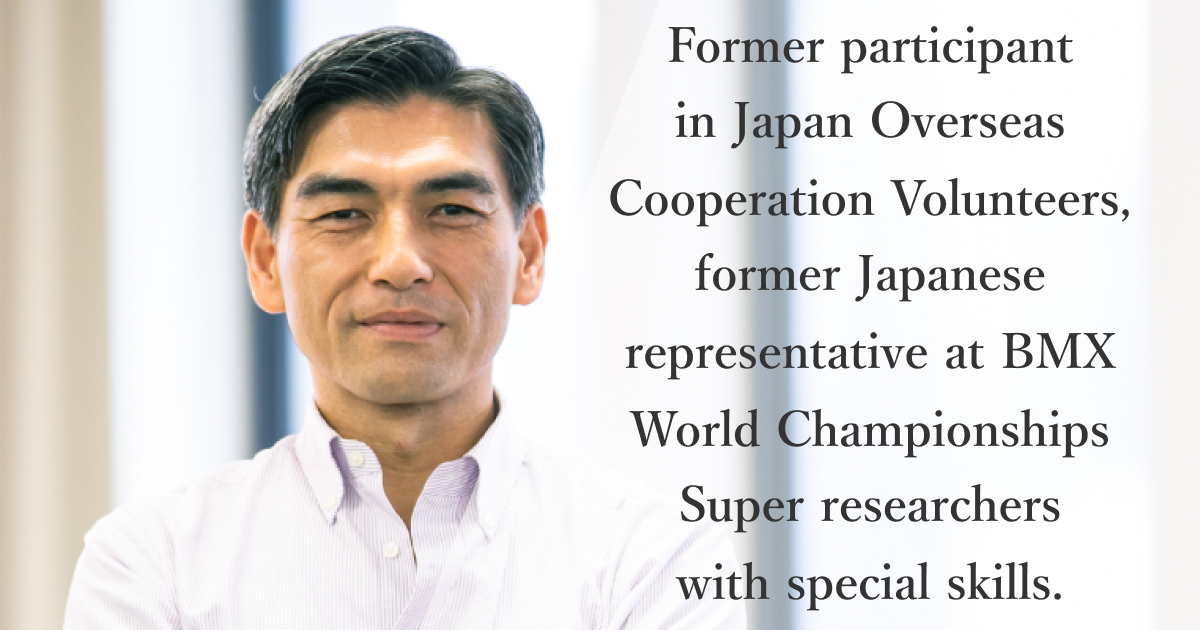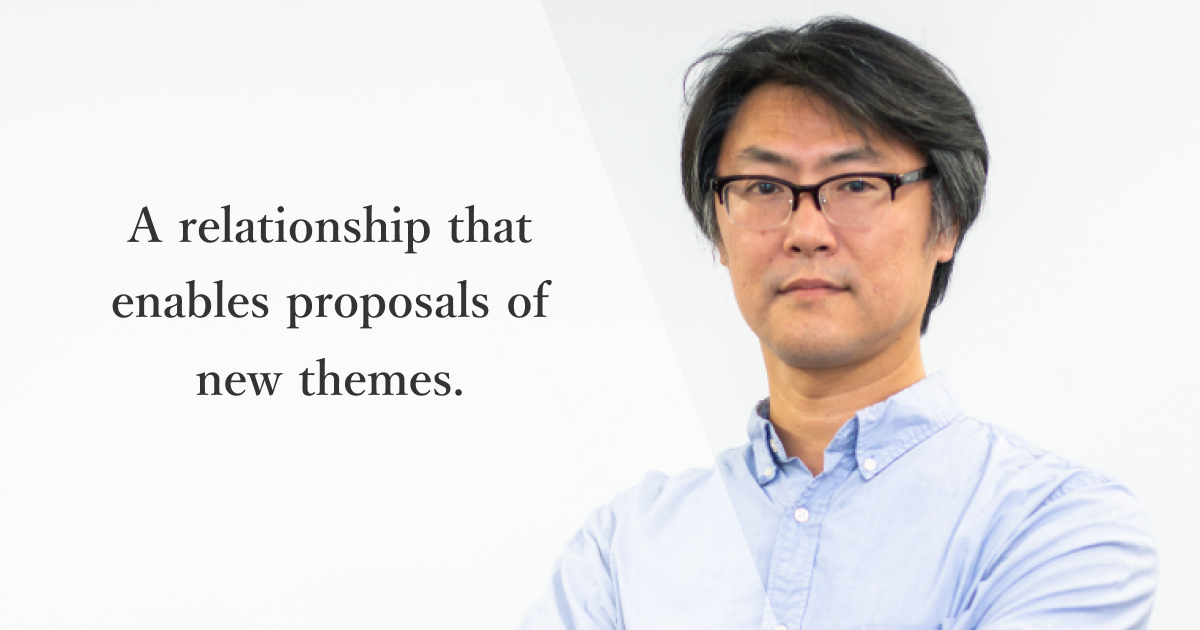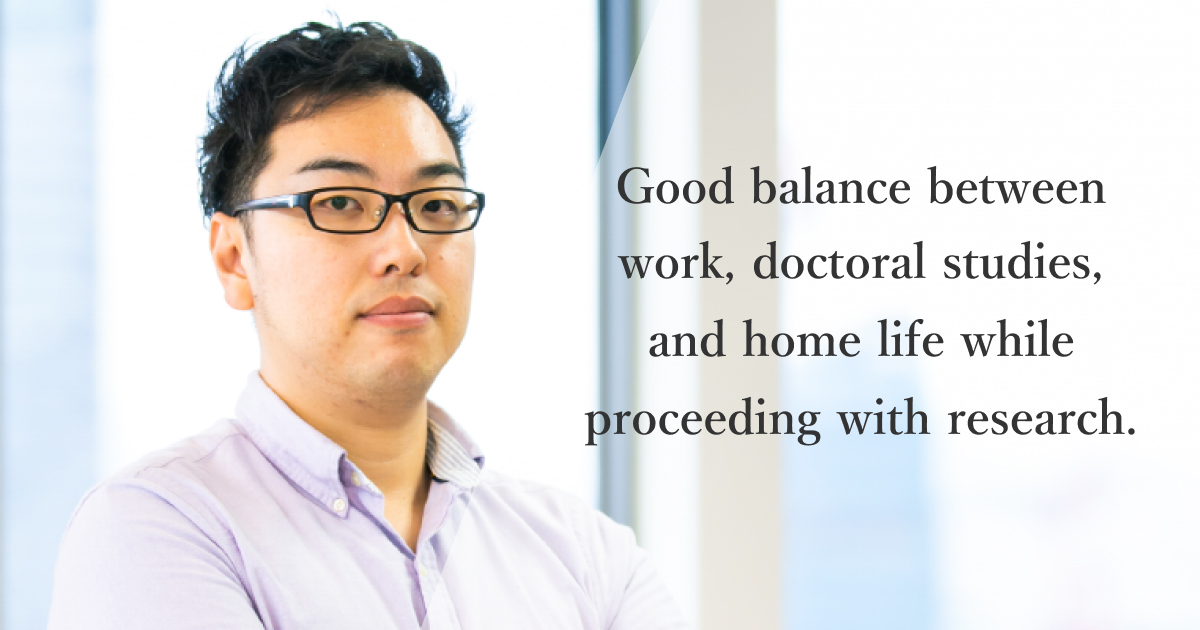Research and Development Group, Senior Researcher
Image
Recognition
Ikuro Sato
Ikuro Sato
PROFILE
Entered company in 2008
after carrying out theoretical physics
research at Lawrence Berkeley National Laboratory
I felt this was the place where my mathematical skills could be put to best use
Mr. Sato told us that he began researching deep learning in 2008. Through abundant accumulation of computational resources and data, deep learning has made it possible to solve a diverse range of problems, and he is researching ways to extend its boundaries. We asked Sato about the current state and limits of recognition technology, as well as the application of such technology to automobiles, with exacting performance requirements for recognition.
A place where I could employ the mathematical skills I gained in the US
I joined DENSO IT Laboratory (hereafter IT Lab) in 2008. It was after I had received a Ph.D. in theoretical physics in the US, and I had been employed doing post-doctoral work at Lawrence Berkeley National Laboratory. The reason I joined IT Lab was that I thought this was the place where my mathematical skills could be put to best use. Generally, corporate research labs emphasize speedy research results that meet business needs. IT Lab is no exception, but I sensed that the atmosphere here reflected clearer rules and principles, as well as a respect for academic legitimacy. The fact that someone like me, who is not a specialist in the field of information, was hired in the first place indicates respect for my potential capability to solve problems from a more foundational basis.
From the time I joined the company to the present, I have mainly carried out research into image recognition that uses machine learning. Deep learning first became a prominent topic of conversation among the general public around 2014, but I had actually been researching it since 2008. I think that among researchers in Japan, I was involved at an early date. Looking back, in those days, we had to wait patiently for incapable calculators to complete their learning. Now we carry out large-scale parallel computation with super computers, which has given us access to much larger data sets than we dealt with at the time. I never imagined such a thing when I was working in physics and I felt I had discovered a truly interesting field.
Extending the boundaries of recognition technology
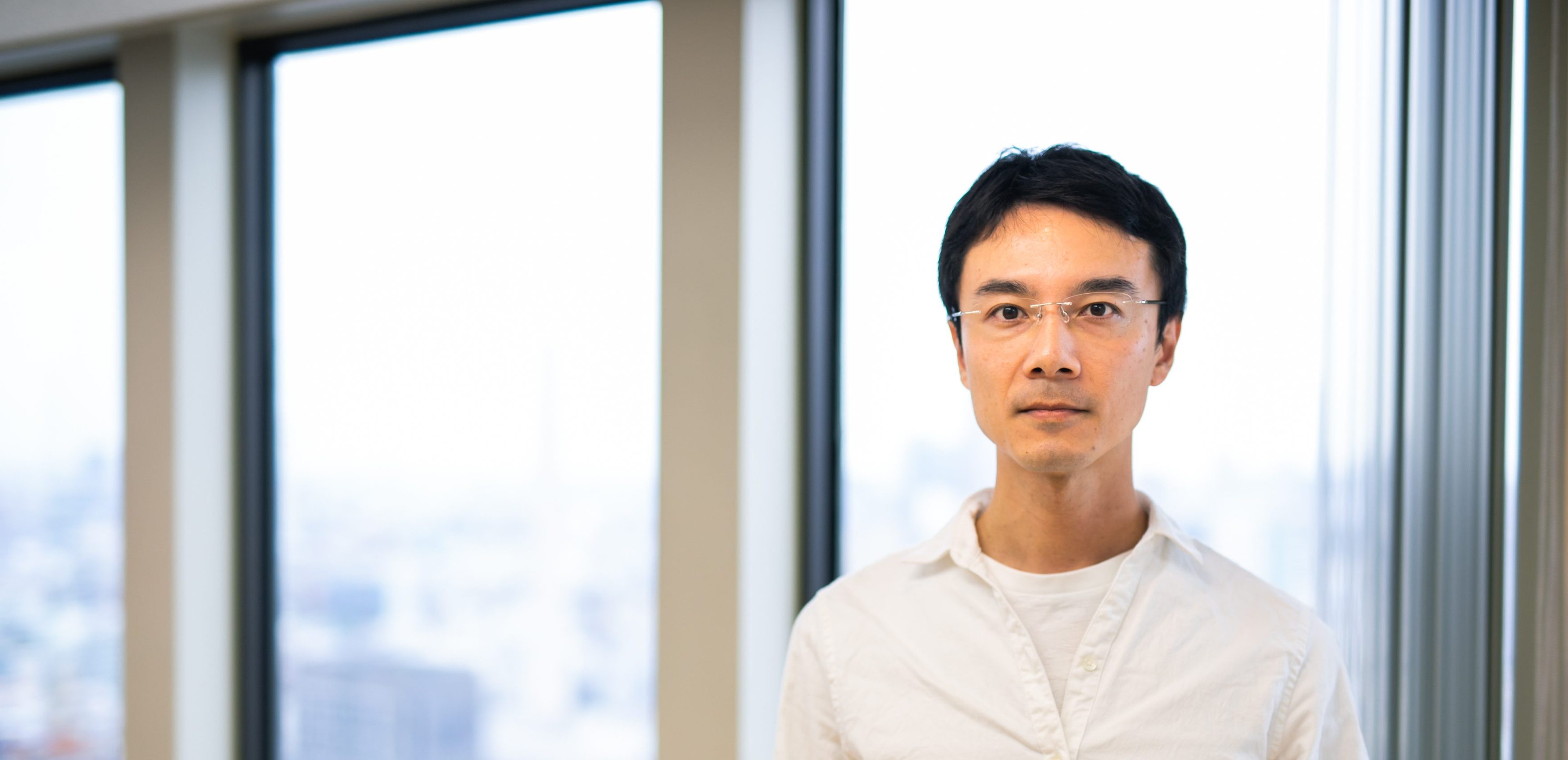
My present theme is the mechanical recognition of objects that appear in images photographed by onboard cameras. In addition to recognizing attributions like vehicles, pedestrians, signs, signal machines, white lines, paint, medians, sidewalks, and buildings, grasping the positional relationships between those things and one’s own automobile is an important technological element of autonomous cars and driving assistance.
I used the word “recognition” just now, but in truth it is a very difficult problem, and the human race still has little knowledge of what can be done to achieve such recognition. Humans may have landed on the moon in 1969, but a half century later, we still don’t have robots that are capable of pulling weeds from gardens. “Recognizing” grass may appear simple, but for machines, it is a very difficult problem.
The current uses of recognition technology address only a small portion of the problems with recognition itself. There are a limited number of set classification problems that are most successful, and it is only after accumulating several ideal output classes that learning is possible. With respect to the previous example, learning means gathering any and all plant and non plant images, then assigning labels. Even if it is ultimately impossible, I’m sure that even people who do not specialize in this can recognize that this is a wise approach.
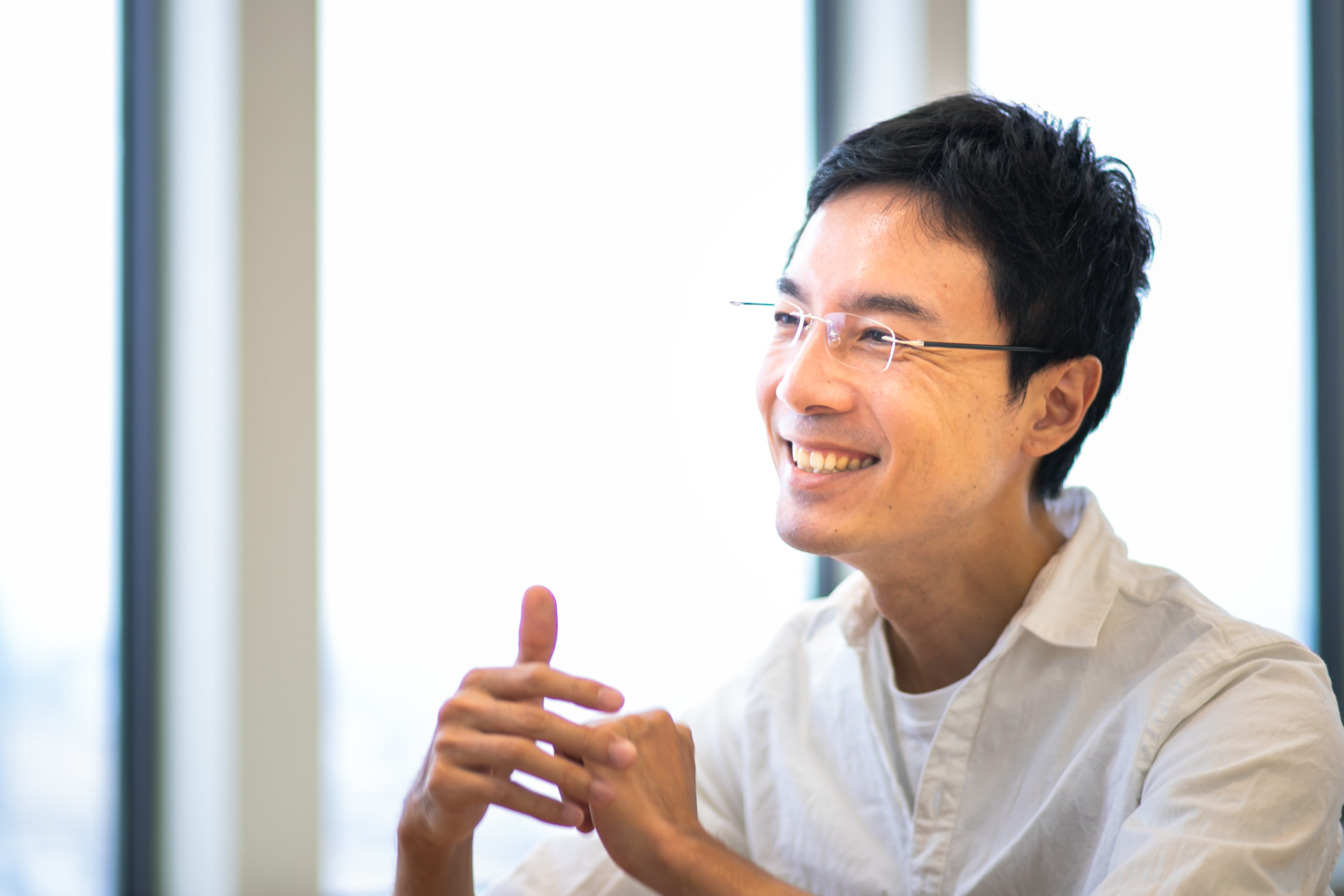
The deep learning neural network (DNN) we have now already has practical uses, such as detecting the presence of pedestrians in images. However, our present recognition technology is not sufficient to achieve level 5, what is called the fully autonomous car. I believe my role is to think about ways that we can possibly bridge that gap and, even piece by piece if necessary, put those things together as concrete methods.
I believe the present stage of my research is the elucidation of the fundamental principles necessary for generalized DNN. The current success of DNN is based more on experience than theory. To use cooking as an example, there is a lot of know-how along the lines of “adding one gram of miso here will lead to a richer taste”. However, for DNN to acquire high recognition ability, there must be some form of mathematical mechanism. First, that needs to be made clear. Once you have done that, I think you get closer to a truly earnest approach.
That we come to the office despite being given freedom is because it’s a place where we can engage in discussion
On weekdays, I send my child to pre-school, do some basic tasks at home, and clock into the office between 10-11 am. I then clock out between 8-9 pm. I also make frequent use of the telework system that was introduced this year. The system provides support to those who are raising children and has made it easier for me to be involved with parenting and housework.
When I am in the office, I make sure to engage in discussion with my co-workers as much as possible. Sometimes those discussions last half the day. IT Lab has a discretionary work system, so there’s no need for us to be seated at our desks for long hours. The fact that so many of us still come to the office, despite that, is because of the discussions we can have. Anyone who has engaged in research has experienced moments when explaining an idea to someone else actually enables one to gain a deeper understanding themselves. The points during the discussion where your partner has questions or gets stuck on something sometimes generate progress in unexpected ways, or lead to formulating of new themes. Lastly, more than anything else, discussions of research are fun. Lately, we have group sessions once a week where we can freely discuss things over beer (bought by the company!) and this has made things even more lively.
If there is anything about my impressions that has changed since joining the company, it is with regard to how research themes are selected. Before I joined the company, I imagined a place with more of a top-down structure, but in reality, it is bottom-up, and researchers can propose their own content for study. On the contrary, you could say that there is a demand for proposals. We then develop our research hypotheses, set about verifying them, and discuss how the results can be useful for the future of automobiles. There are few barriers between top and bottom, making it a good atmosphere where it is easy to engage in frank discussions.
If I had to describe the company in one sentence, I’d say it’s a place where we can be our best selves. This is reflected in the way we select our research themes and the free work environment. If you need to study something, you can make that a part of your daily tasks. We are all given fundamental encouragement to publish papers, give lectures outside the company, or carry out other academic activities that we would like to accomplish. A company where you make your own academic knowledge and skills useful for society is a fulfilling place to work.

